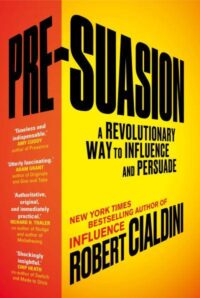Reading Notes for:


What’s Focal Is Causal
It’s no wonder that we assign elevated importance to factors that have in our attention. We also assign them causality. Therefore, directed attention gives focal elements a specific kind of initial weight in any deliberation. It gives them standing as causes, which in turn gives them standing as answers to that most essential of human questions: “Why?”
Because we typically allot special attention to the true causes around us, if we see ourselves giving such attention to some factor, we become more likely to think of it as a cause. Take monetary payments. Because the amount of money is so salient in the exchanges—“I’ll pay you x when you do y”—we tend to infer that the payment spurred the act, when, in fact, it was often some other, less visible factor. Economists, in particular, are prone to this bias because the monetary aspects of a situation dominate their attentions and analyses.
Thus, when Harvard Business School economist Felix Oberholzer-Gee approached people waiting in line at several different venues and offered them money to let him cut in, he recognized that a purely economics-based model would predict that the more cash he offered, the more people would agree to the exchange. And that’s what he found: half of everyone offered $1 let him cut in line; 65 percent did so if offered them $3, and acceptance rates jumped to 75 percent and 76 percent when he proposed the larger sums of $5 and $10.
According to classical economic theory, which enshrines financial self-interest as the primary cause of human behavior, those greater incentives convinced people to take the deal for their own fiscal betterment. Well, right, except for an additional finding that challenges all this thinking: almost no one took the money.
To explain his findings, Oberholzer-Gee stepped away from a consideration of salient economic factors and toward a hidden factor: an obligation people feel to help those in need.
The obligation comes from the helping norm, which behavioral scientists sometimes call the norm of social responsibility. It states that we should aid those who need assistance in proportion to their need. Several decades’ worth of research shows that, in general, the more someone needs our help, the more obligated we feel to provide it, the more guilty we feel if we don’t provide it, and the more likely we are to provide it. When viewed through this lens, the puzzling findings make perfect sense. The payment offers stimulated compliance because they alerted recipients to the amount of need present in the situation. This account explains why larger financial inducements increased consent even though most people weren’t willing to pocket them: more money signaled a stronger need on the part of the requester.
There are many other factors—social obligations, personal values, moral standards—that, merely because they are not readily observable, are often more determining than they seem. Elements such as money that attract notice within human exchanges don’t just appear more important, they also appear more causal.
